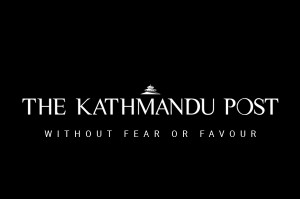Valley
NP fails to arrange dress for temporary police
The Nepal Police Headquarters has failed to finalise the dress for the temporary police who in the next three days will be out on the field for election security.
The Nepal Police Headquarters has failed to finalise the dress for the temporary police who in the next three days will be out on the field for election security.
Without a proper dress code, police chiefs on the ground believe that people will not be able to identify the Myadis from commoners and this will have a negative
effect on poll security. Furthermore, they worry that people might misuse the
name of the temporary recruits and get involved in illegal activities, eliciting fear among the public.
“How can you tell who is a Myadi or who is not?” questioned Deputy Inspector General of Police Bijaya Lal Kayastha, chief of the Mid-western Regional Police Office. “People should know that these people are part of the security system for at least another 55 days.”
In the previous election, the Myadis had worn the dangri. A mixture of dark blue and light purple, the dangri consists of a full-sleeved shirt with two large chest pockets, a sports cap and baggy pants usually tucked inside boots. However, since the dangri is now worn by all Nepal Police personnel and officials, it might also create difficulty in differentiating the permanent police from the Myadis.
When the Myadis wore the dangri in the Constituent Assembly elections, Nepal Police personnel wore their camouflage, with patches of light and dark blue and
black. This dress was used following the Maoist insurgency and was abandoned a few years ago.
As the police offices are already struggling to pay for the Myadis after the delay from the Ministry of Home Affairs to release the
funds, a dress code for the new recruits has become another major problem. Each temporary cop will get a monthly remuneration of Rs17,230, besides rations and an additional amount for the specified dress.
Deputy Superintendent of Police Milan KC, chief of the District Police Office, Okhaldhunga, said they have been asked to manage the dress locally. But given the short time and a large consignment, local outlets are not willing to supply the dress. “Police personnel with a proper institutional dress can instil a sense of security in the society. We are not sure about the deployment of Myadis in civil dress,” said DSP KC. “But we have been talking with the regional police office and we might contract big garment factories for timely delivery of the dress.”
The NP Headquarters said it has not decided on the dress yet. “With the date for the local elections approaching, we don’t think we can procure their dresses,” said Senior Superintendent of Police Sarbendra Khanal, spokesperson for the Nepal Police.
SSP Khanal said since they do not have time for large-scale procurement of the dress for the 75,000 recruits, an allowance will be provided to all the Myadis to purchase a prescribed set of dress.
The government finalised the names of the Myadis on April 4. Their training began on April 7 at all the district police offices. The Myadis will be assigned to their duty stations after their training gets over on April 21. The Myadis have been hired as a backup for the Nepal Police and are supposed to help with arranging lines at the voting booths during the elections scheduled for May 14.




 12.12°C Kathmandu
12.12°C Kathmandu








%20(1).jpg&w=300&height=200)

